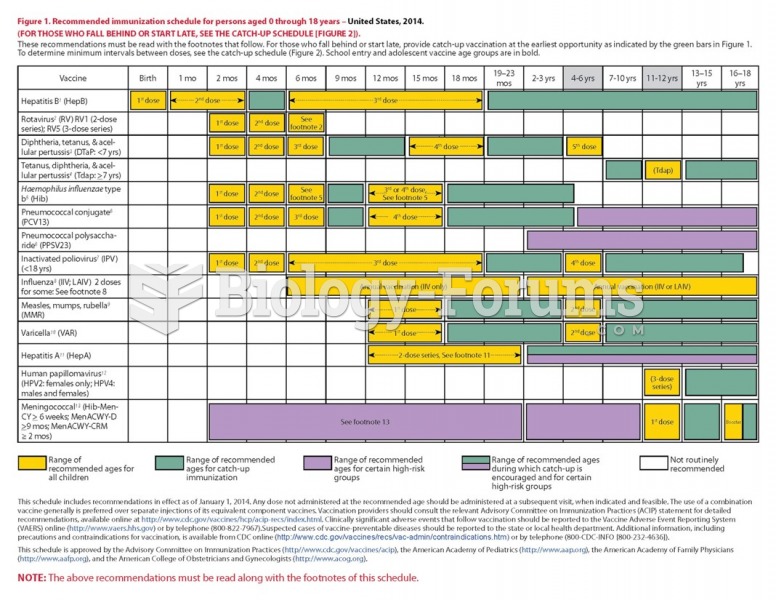|
|
|
It is difficult to obtain enough calcium without consuming milk or other dairy foods.
The familiar sounds of your heart are made by the heart's valves as they open and close.
Drugs are in development that may cure asthma and hay fever once and for all. They target leukotrienes, which are known to cause tightening of the air passages in the lungs and increase mucus productions in nasal passages.
On average, someone in the United States has a stroke about every 40 seconds. This is about 795,000 people per year.
Cutaneous mucormycosis is a rare fungal infection that has been fatal in at least 29% of cases, and in as many as 83% of cases, depending on the patient's health prior to infection. It has occurred often after natural disasters such as tornados, and early treatment is essential.







